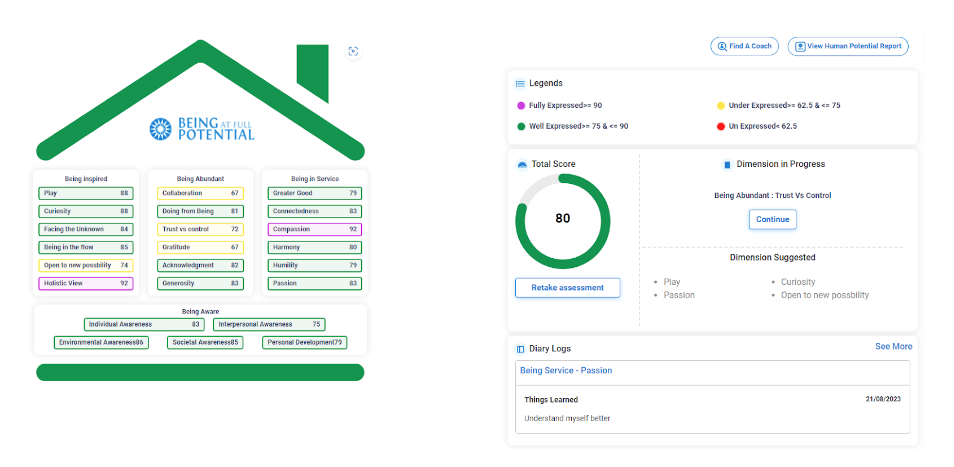ROI of boosting employee engagement has become an increasingly important metric in recent years, with a significant rise in global searches for the term on Google Trends since 2009. It’s fair to assume that a happy employee will also be a productive one, but does the data back this up? Do we have evidence that improvements in engagement will positively impact the bottom line? In this blog, we set out on an intriguing journey to understand the relationship between improvements in employee engagement and ROI. By examining the patterns and swings in employee engagement trends, we can solve the secrets of what inspires and empowers people and how it directly affects an organization’s ROI. Join us as we dive deeply into the connections between retention, customer satisfaction, innovation and Employee Engagement hopefully to provide you with some useful insights and conclusions.
What is ROI?
ROI is a financial metric that measures the benefits against the cost of an investment. ROI of Employee engagement assesses the returns on initiatives to enhance productivity, reduce turnover costs, improve customer satisfaction, foster innovation, and strengthen employer branding and recruitment.
Why is employee engagement vital, and what does it entail?
“Employee engagement” describes how content, inspired, and satisfied a worker is with their job. Monitoring and enhancing employee engagement is crucial to the success of any organization since, according to Gallup, engaged workers outperform disengaged workers by a startling 147%. An engaged worker is more likely to be effective, upbeat, dedicated, and go above and beyond the call of duty.
A Breakdown of The Evidence: ROI of Employee Engagement through the lens of retention, customer satisfaction and innovation
1. Improvements in retention
Gallup’s Employee Engagement Meta-Analysis:
Gallup’s meta-analysis of over 192 organizations and 49,928 work units found that highly engaged teams experience 59% lower turnover rates compared to teams with low engagement.
LinkedIn Workplace Culture Report:
LinkedIn’s study reveals that 94% of employees would stay at a company longer if it invested in their career development.
Deloitte Global Human Capital Trends Report:
Deloitte’s report shows that organizations with a strong sense of purpose and employee engagement are 50% more likely to retain their employees.
SHRM’s Human Capital Benchmarking Report:
The Society for Human Resource Management (SHRM) reported that organizations with effective employee engagement programs experience a 28.6% lower turnover rate.
When employees are fully engaged in their work, they tend to be more dedicated and make greater contributions towards the success of the organization. This results in a strong and unified team, which in turn leads to increased retention rates.
Employee turnover can harm a company’s performance. It can result in team disruptions, decreased morale, and reduced productivity, causing missed goals and increased expenses.
By investing in employee engagement, businesses can reduce turnover costs and improve work quality. When engaged, staff become more committed to the business and are more likely to stay.
2. Greater Customer Satisfaction
Having satisfied customers is crucial for a thriving business. When your employees are committed and enthusiastic about their work, they take ownership of their responsibilities, offer top-notch service, and demonstrate to clients that your business values their experience.
Let’s explore some statistical data that highlights the link between employee engagement and customer satisfaction:
Temkin Group’s Employee Engagement Benchmark Study:
According to Temkin Group, companies with highly engaged employees have a customer satisfaction level of 73%, while companies with disengaged employees have only 38% customer satisfaction.
Aon Hewitt’s Employee Engagement Research:
Aon Hewitt’s study found that organizations with high employee engagement see a 10% increase in customer satisfaction metrics.
Gallup’s State of the Global Workplace Report:
Gallup’s research reveals that organizations with engaged employees achieve 20% higher customer loyalty and 10% higher customer ratings.
Harvard Business Review’s Employee Engagement Analysis:
Harvard Business Review reported that organizations with highly engaged employees outperform competitors by 147% in earnings per share.
3. Innovative Employees Are Those Who Are Engaged.
Without question, innovation and originality are essential to the success of any organization. You might be wondering how innovation and employee engagement are related. Your business gains a competitive edge when you encourage and enable your people to push the envelope.
Gallup’s State of the Global Workplace Report:
According to Gallup’s study, employees who are engaged with their work are 3.5 times more likely to contribute innovative ideas that drive business growth.
Aon Hewitt’s Global Employee Engagement Trends Report:
Aon Hewitt’s research found that organizations with highly engaged employees report a 28% increase in their ability to innovate.
IBM’s Global Human Capital Study:
IBM’s study revealed that companies with a strong focus on employee engagement are 1.7 times more likely to be seen as innovation leaders in their industry.
Deloitte’s Global Human Capital Trends Report:
Deloitte’s research shows that organizations with a culture of innovation and high employee engagement are twice as likely to achieve above-average financial performance.
Disengaged workers are less inclined to share their ideas with the business, which can stifle innovation and progress. Innovation is crucial to being competitive and increasing the return on employee engagement.
ROI of boosting employee engagement – Best Practices

Calculating Data And Feedback
Consider using surveys, focus groups, interviews, and performance reviews to gather information about employee engagement. It’s important to ensure the surveys are verified, and privacy is maintained so that honest feedback is received. Tracking engagement levels over time can help identify patterns that may need improvement.
Calculating ROI
To determine the success of employee engagement, it’s important to establish clear goals and baseline measures, isolate the results from any other factors, employ statistical analysis to evaluate the connection between engagement and desired outcomes and calculate the financial benefits of improved results to determine the return on investment.
Demonstrate Business Value
To demonstrate the impact of employee engagement on business success, highlight its positive influence on production, revenue, customer satisfaction, staff retention, and innovation. Use visuals, charts, and real-life examples to communicate engagement initiatives’ return on investment (ROI) to all stakeholders.
Leading By Example
Promoting good leadership, acknowledging employee accomplishments, and involving them in decision-making are important to foster a positive workplace culture. Offering training opportunities and celebrating success stories can also serve as sources of inspiration for others
Conclusion
Organizations can better understand outcomes and make informed decisions by measuring the ROI of employee engagement. Investing in engagement and using effective tools can help companies create a lively workplace that promotes success. Please get in touch if you would like to know more about the Human Potential Assessment Tool as a way of measuring the deeper drivers of engagement and accurately assessing the business impact of your interventions.


